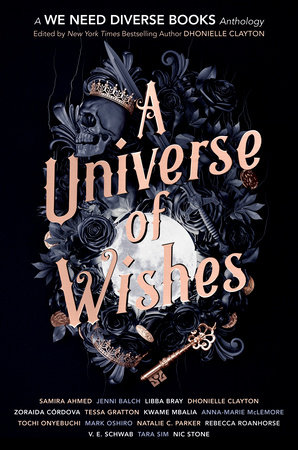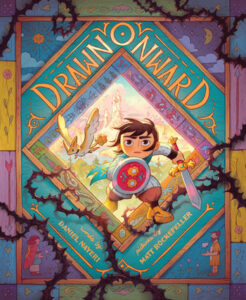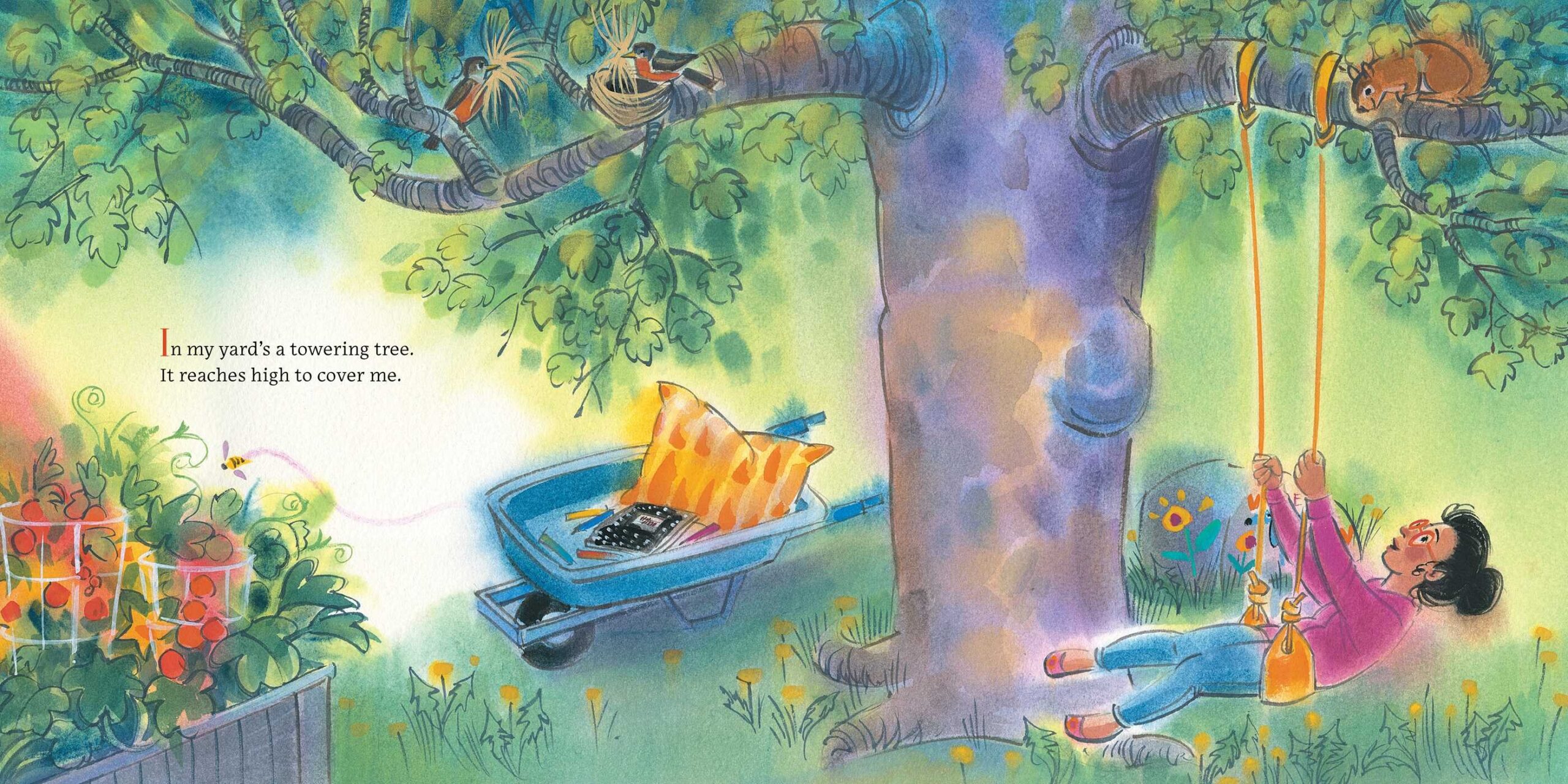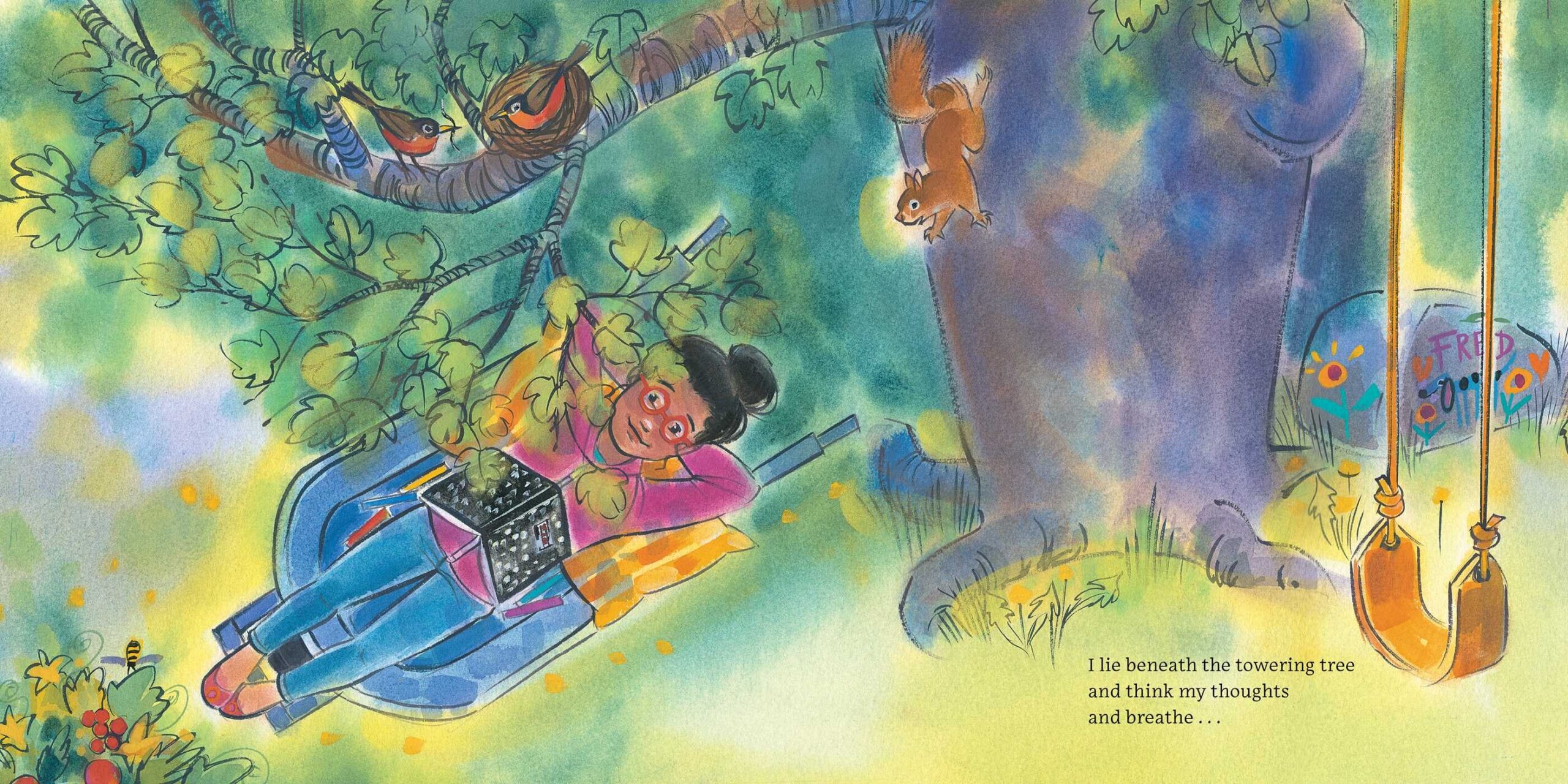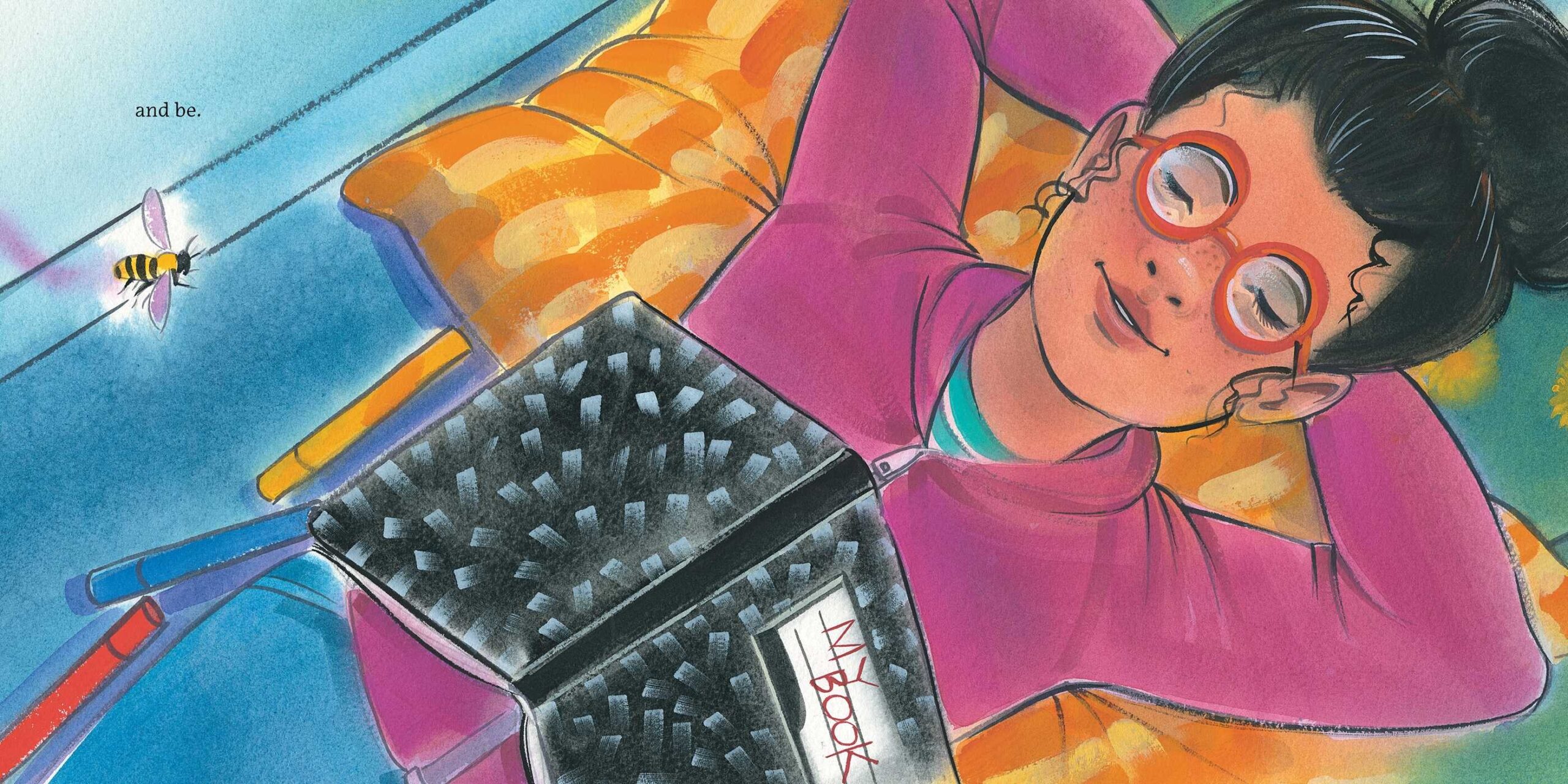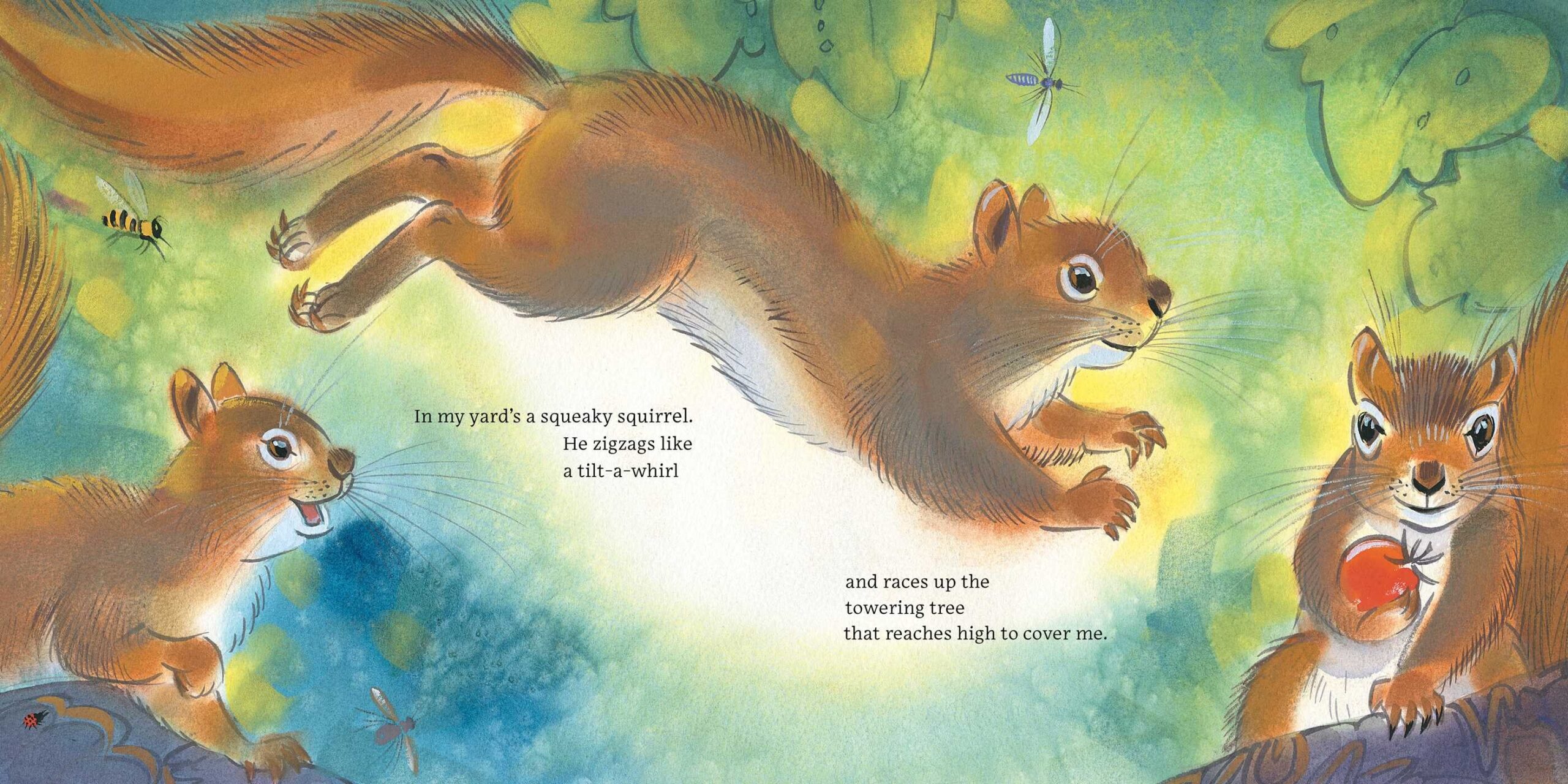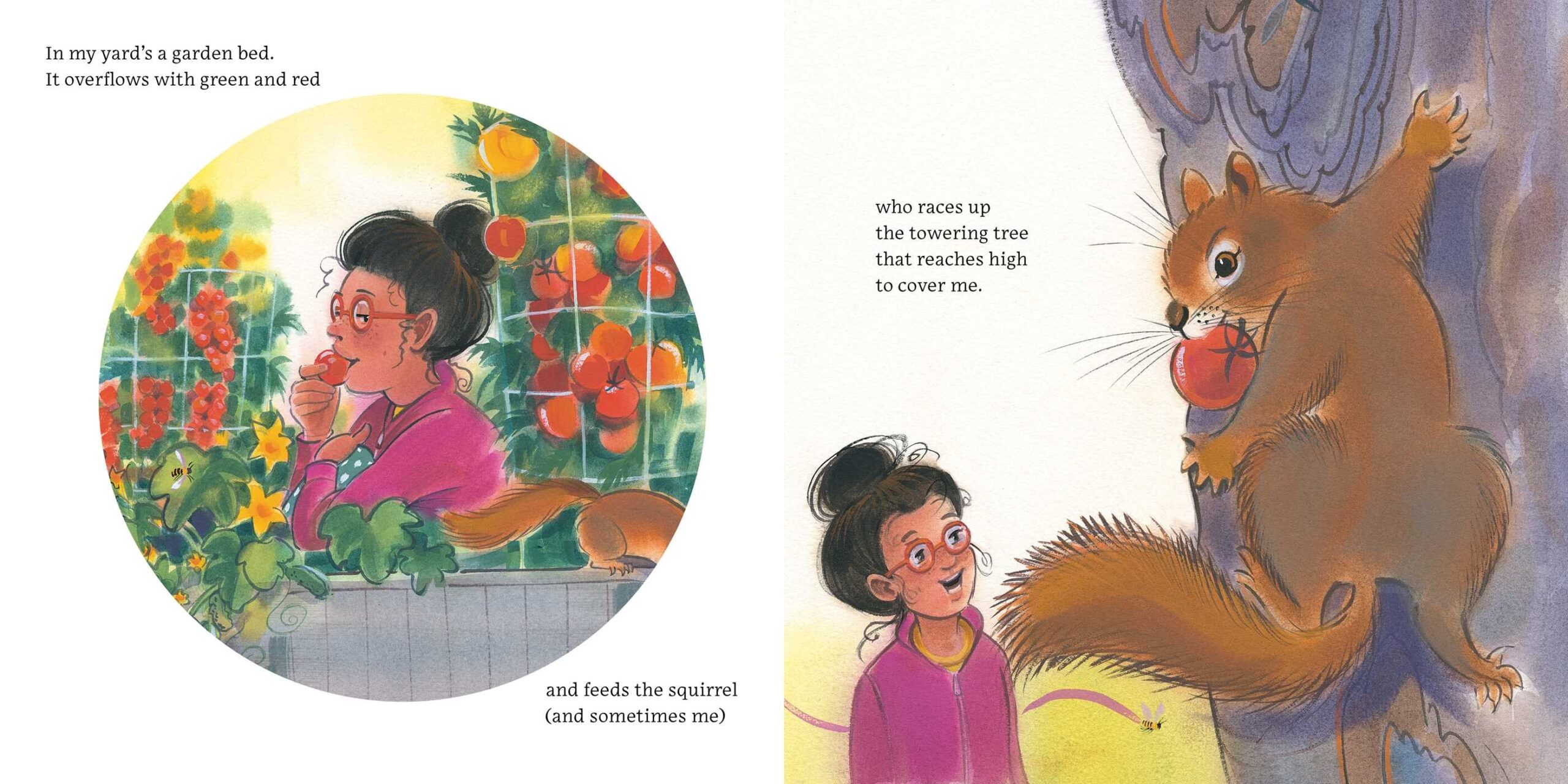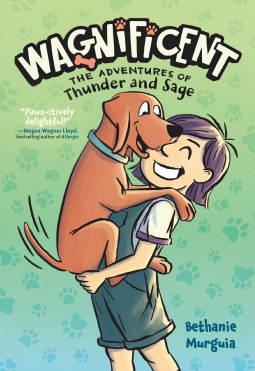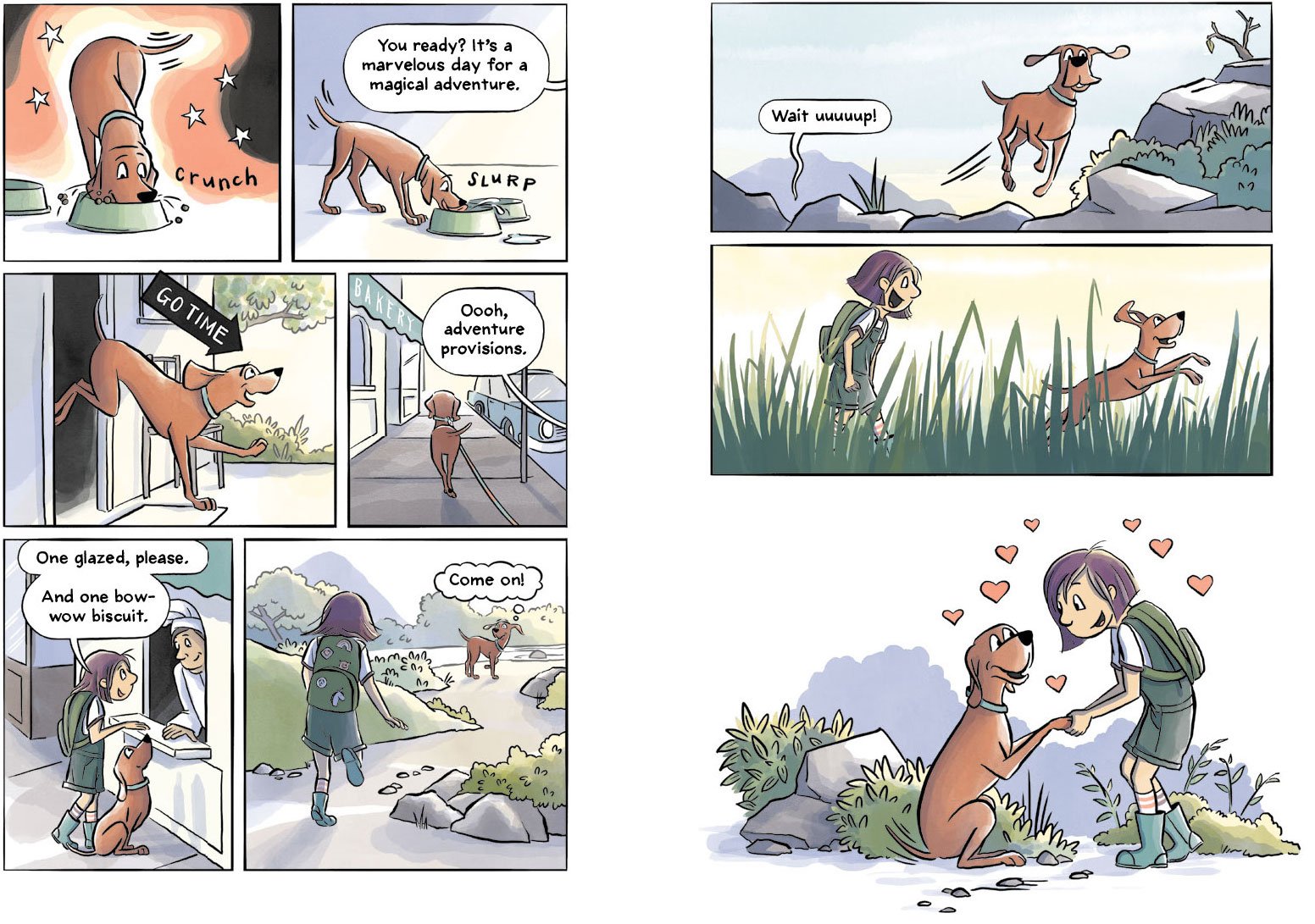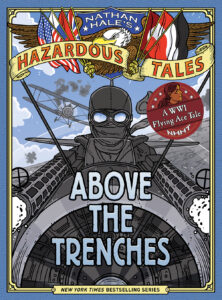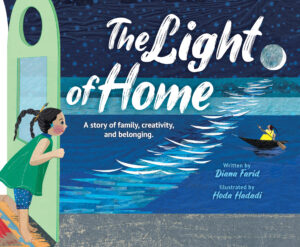
The Light of Home: A Story of Family, Creativity, and Belonging
Author: Diana Farid
Illustrator: Hoda Hadadi
Published September 17th, 2024 by Orchard Books
Summary: A universal story about displacement, migration, and the many ways we find home, from the talented author-illustrator team of Diana Farid and Hoda Hadadi.
Nur has always loved her home by the sea, where water glimmers along a straight horizon.
But when Nur and her family are forced to leave, they begin a long journey to an unfamiliar place. Here the horizon curves and twists, and the moonlight no longer glitters across the water. For Nur, nothing in this new place feels like home.
Then one day, Nur’s mother brings her a new set of paintbrushes. Nur’s brushstrokes help her connect the place she’s lost to this new horizon, and she finds home again through her own creativity and heart.
The Light of Home will resonate with anyone who has ever had to leave a place they’ve loved.
From author, poet, and physician Diana Farid and artist Hoda Hadadi comes this introspective story about belonging and the power of creativity. For readers of Yuyi Morales’ Dreamers and Yamile Saied Mendez and Jaime Kim’s Where Are You From?
About the Creators:
Diana Farid is an award-winning author and poet. Her picture book, When You Breathe, was a National Council of Teachers of English Notable poetry book. Her novel in verse, Wave, was the 2022 Cybils Award winner for poetry novel and a School Library Journal Best Middle Grade Book. She is also a physician and associate professor of medicine at Stanford University. To learn more, visit dianafarid.com.
Hoda Hadadi is a children’s books illustrator living and working in Tehran, Iran. She has illustrated more than forty books for children and has won numerous international prizes, including the New Horizons Bologna Ragazzi Award and the Grand Prix of Belgrade.
Instagram
Diana Farid: @_artelixir
Hoda Hadadi: @hodahadadi_artpage
Orchard Books/Scholastic: @scholastic
Blue Slip Media: @blue_slip_media
Facebook
Diana Farid: N/A
Hoda Hadadi: Hoda Hadadi
Orchard Books/Scholastic: Scholastic
Blue Slip Media: Blue Slip Media
Twitter/X:
Diana Farid: @_artelixir
Hoda Hadadi: @hoda_hadadi
Orchard Books/Scholastic: @Scholastic
Blue Slip Media: @blueslipper & @barbfisch
LinkedIn:
Diana F
Review: Farid’s picture book puts the reader right in the middle of a family’s flee as refugees from their home and all their possessions. With the introduction of the characters’ lives and loves starting the book, the reader will feel the sadness and longing that Nur feels. It helps the reader feel the urgency and the fear. It helps build empathy for those put in the situation of being displaced.
But that is only one important aspect of the book. The book also highlights the importance and therapeutic properties of art, which is proven and so powerful. Nur uses art to help heal her feeling of loss and being lost.
Farid and Hadadi were the perfect duo for this book because Farid’s lyrical text blends beautifully with Hadadi’s collages to create a beauty of a picture book.
Discussion Questions:
- Before Nur’s family must flee, how did Nur and her family feel about their home?
- What are some reasons why families may be displaced?
- Why is it so hard for Nur to adjust to her new home?
- How is Nur’s new home different than her home by the sea?
- How does Nur work through her emotions?
- What are some ways that help you work through big emotions?
- What figurative language does the author use? How does it add to the imagery of the story?
- How do the illustrations add to the story?
- Why do you think the author wrote Nur’s story?
Flagged Spreads:
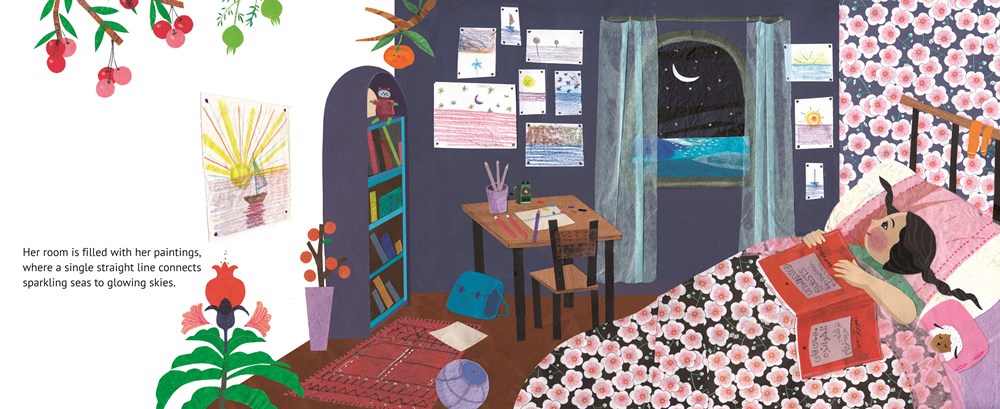
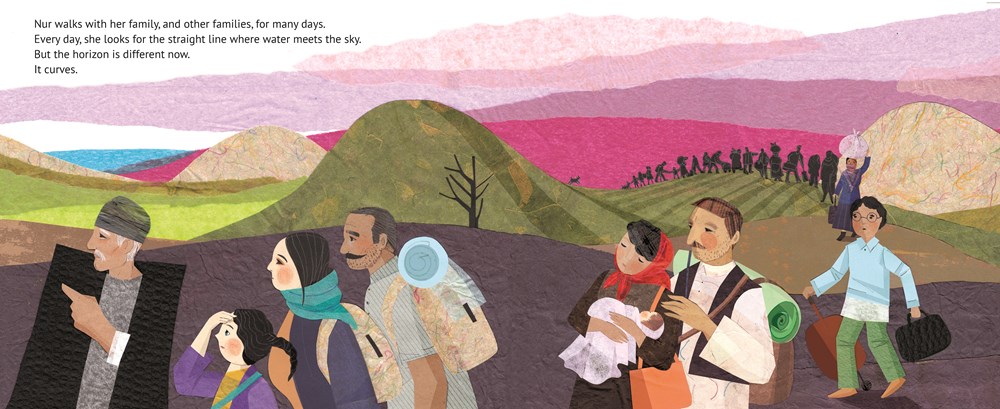
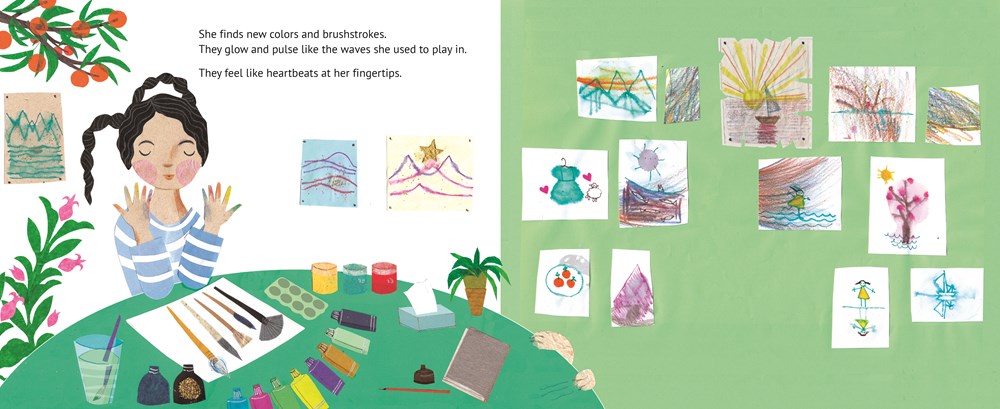
Read This If You Love: Picture books that take on big issues in an approachable way
Recommended For:



**Thank you to Blue Slip Media for providing a copy for review!**
